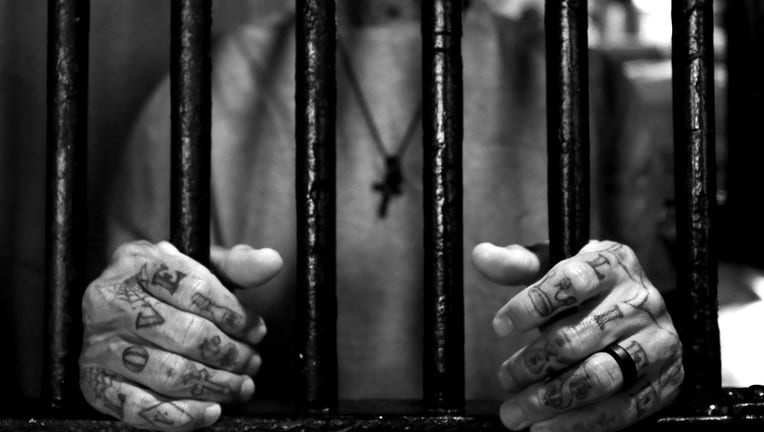California to move more than 700 condemned inmates off death row

SAN QUENTIN, CA - JUNE 08: Branden Terrel stands in his cell on June 8, 2017 in San Quentin, California. Branden Terrel was sentenced to 11 years in state prison for the 2012 stabbing death of one of his friends. (Photo by Ezra Shaw/Getty Images) (Getty Images)
SACRAMENTO, Calif. (AP) - More than 700 condemned inmates on California’s largest-in-the-nation death row soon will have a chance to transfer to one of eight state prisons, a move a former district attorney termed “a slap to the face” of victims.
The voluntary transfers from San Quentin State Prison’s all-male death row to other high-security prisons could benefit condemned inmates not only with more freedom and a change of scenery, but provide an opportunity to participate in rehabilitation and work programs.
That may sound like another in a series of steps California lawmakers and voters have taken in recent years to reduce criminal penalties. But it actually was part of a ballot initiative voters narrowly approved four years ago to try to speed up executions.
The state hasn’t executed anyone since 2006 but voters have continued to back the death penalty even as they reduced many drug and property crimes from felonies to misdemeanors and allowed for the earlier parole of thousands of inmates.
Former San Bernardino District Attorney Mike Ramos, co-chairman of the Proposition 66 committee that backed the 2016 initiative, said this isn’t what voters intended when 51% favored quicker executions by assigning more lawyers to death sentence appeals and shifting some appeals to trial court judges.
Democratic Gov. Gavin Newsom imposed a moratorium when he took office last year that he said would last as long as he is in office.
Victims’ families “suffer every day,” Ramos said. “Now to say that this murderer is going to be allowed to go to a rehabilitation program and be treated like any other low-grade inmate is a slap to the face.”
Criminal Justice Legal Foundation legal director Kent Scheidegger, who helped write Proposition 66, said proponents didn’t intend to coddle condemned inmates.
“One of the arguments made against the death penalty was it cost too much to house them at San Quentin, which is an antique facility. Our response was, well, they don’t need to be housed there,” Scheidegger said. “It was more to defuse one of the contrary arguments.”
There’s not much point in trying to rehabilitate condemned inmates, he said: “Unless they get pardoned, they’re not going to be seeing the outside of the prison walls anyway.”
The nonpartisan legislative analyst at the time said the transfers could save money because of increased security costs at San Quentin. Inmates on death row are housed one to a cell and generally are handcuffed and escorted by one or two correctional officers whenever they are outside their cells.
At the other prisons, they’ll be housed with non-condemned inmates and participate in programs and other activities.
Condemned women are housed at the Central California Women’s Facility in Chowchilla and will have to stay there because it’s the only women’s prison surrounded by a lethal electrified fence. But those 22 women can transfer to alternate housing within the prison and, like the men, participate in rehabilitation and work programs.
Democratic Assemblyman Marc Levine said it’s ironic that death penalty supporters included the provision in their bid to speed executions, but now are unhappy with the results.
“That they also voted to allow rehabilitation services is poetic justice and reveals just how broken and beyond repair the death penalty is,” he said.
Levine is lobbying legislators to put a new measure on the November ballot asking voters, for the third time in eight years, to end capital punishment.
Corrections officials dismantled the state’s newly built $853,000 execution chamber at Newsom’s direction, but continued developing what they are calling a two-year pilot program to allow the transfers off death row.
“We’re carrying out this part of the law,” corrections department spokeswoman Terry Thornton said.
The condemned inmates will face psychological, physical and security evaluations, the same as any other inmate, to determine their appropriate housing. The only ones immediately ineligible are those in disciplinary segregation or those who have committed serious offenses within prison in the last five years.
Prison administrators and researchers plan to evaluate the program over the two years, tracking the number of participants, the number with jobs, inmates’ behavior, and any effect on prison safety.
The ballot measure requires that 70% of anything they earn will go to a restitution program for victims and survivors, up from the 50% restitution rate for other prisoners.
“One of the thoughts behind Prop 66, there’s no reason death row inmates can’t work and earn some small income, and that small income can go to the victim’s family,” Scheidegger said. “It’s not going to be much but at least it can be symbolic.”
Ramos countered: “I don’t know of one family that’s going to want one cent from someone who took their loved ones.”
The department hopes to start the program within 60 days, but can’t say when the first inmate will move or how many will participate, because it’s voluntary, Thornton said.
Crime Victims Alliance director Christine Ward accused Newsom of breaking what she said was his promise to crime victims after his moratorium to “take no further action regarding the status of condemned inmates.”
She said the move endangers prison employees, other inmates and the public because “condemned inmates have nothing to lose if they commit acts of violence.”

